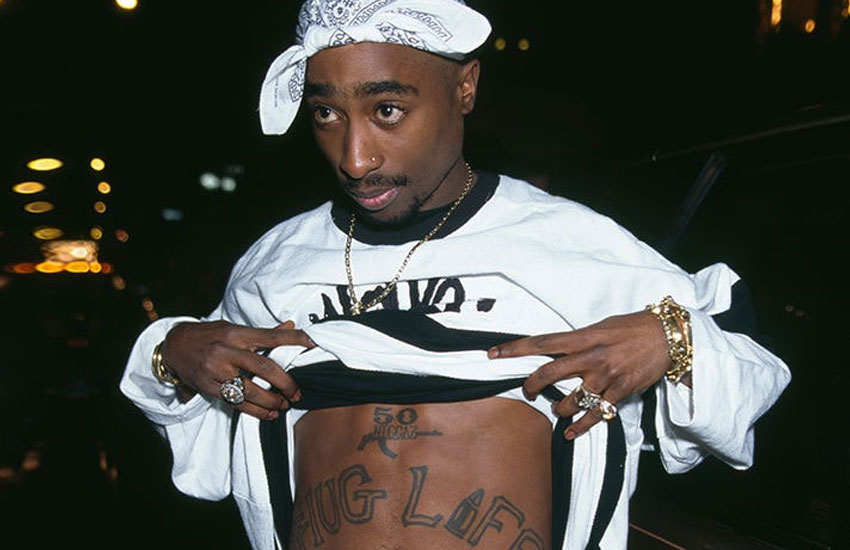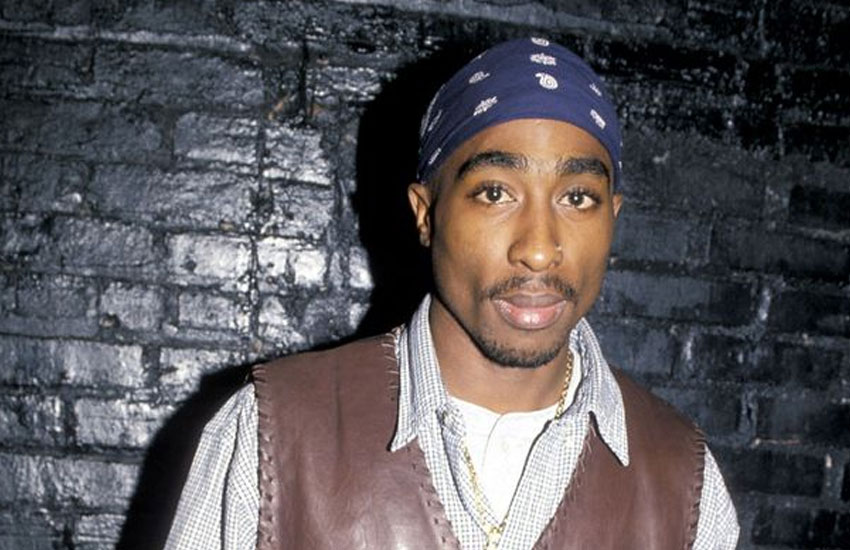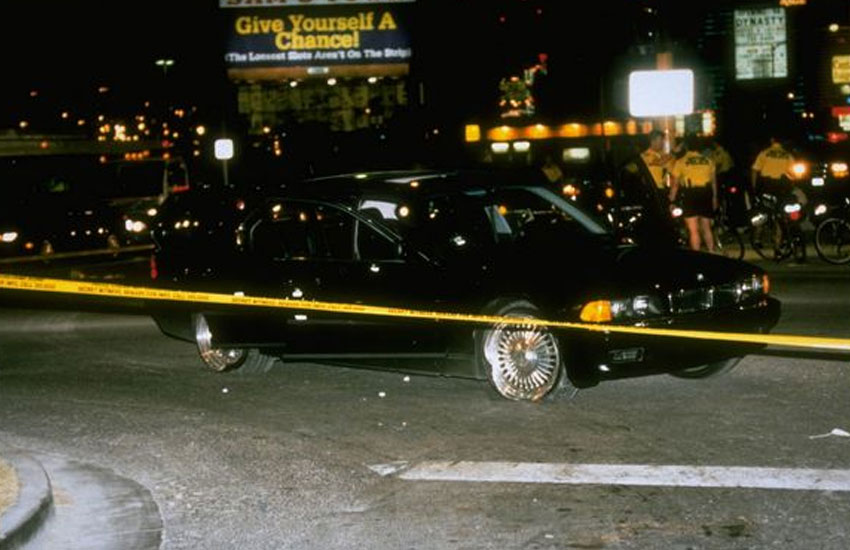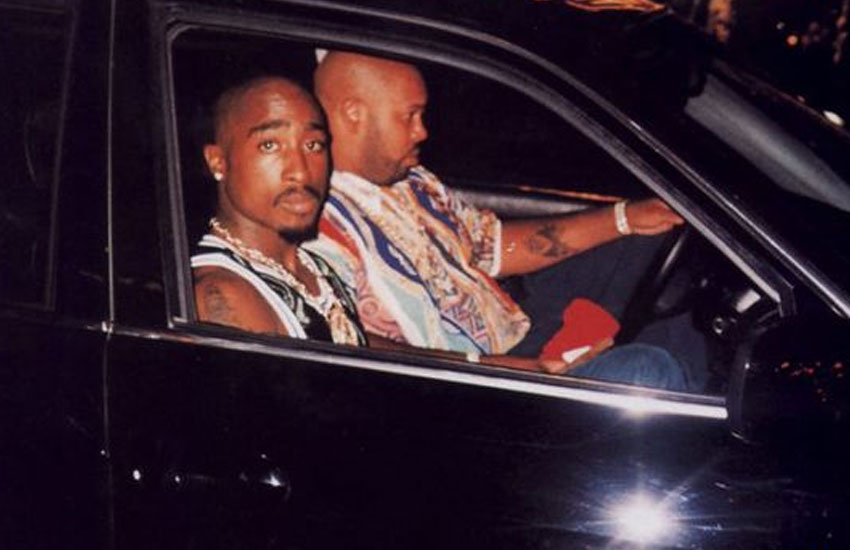
There were plenty of witnesses to the murder of Tupac Shakur.
Friend and Death Row Records boss Suge Knight was sat right next to the rapper when he was fatally struck by four bullets to the chest, arm and thigh in a drive-by shooting.
And the slaughter took place at a red light outside Las Vegas' popular Club 662 at 11.15pm, meaning there was no shortage of onlookers who witnessed the white Cadillac pull up to the right of Suge's black BMW before the shots were fired.
And yet no-one has ever been brought to justice.
An immediate wall of silence was erected by the Death Row crew, who refused to name the shooter.
Despite being hit in the head by bullet fragments and spending the night in hospital, Suge told police he, "heard something, but saw nothing."
He'd later quip, “It’s not my job. I don’t get paid to solve homicides. I don’t get paid to tell on people.”
Tupac himself refused to name his killer at the murder scene, whispering 'f*** you' to an investigating police officer in what would apparently be his last words before his death on Friday, September 13, 1996.
So who did kill Tupac and why were they never caught?

The main suspect was Orlando Anderson, who'd been attacked by Tupac and his crew in the lobby of Las Vegas' MGM Grand casino earlier that night.
Anderson, then 21, was said to be a member of the rival Crips gang and had allegedly stolen a medallion from one of Tupac's entourage.
He later denied having had anything to do with the killing and filed a lawsuit against Tupac's estate for damages for injuries sustained in the beating.
Tupac's mother Afeni Shakur responded by attempting to sue Anderson for wrongful death. According to the Associated Press, the lawsuits were settled in May 1998, just hours before Anderson was killed in an unrelated gang shooting.
Meanwhile, with no arrests made, Las Vegas police claimed their investigation had stalled due to a lack of co-operation from Tupac's entourage.
However, a report by the Los Angeles Times suggested that some of the gang members did offer information - but were ignored.
The article accused officers officers of failing to follow up with Tupac's close friend, Yafeu “Kadafi” Fula, who said he could identify the killer. Fula was killed weeks later in an unrelated shooting.
It was also claimed police ignored a report about a sighting of a rented white Cadillac, and refused to believe the earlier brawl was between two gangs rather than a random attack.

Sgt. Kevin Manning, who led the investigation, defended his team's work, insisting, “Tupac got the same treatment as any other homicide here."
“But you know what? We can’t do it alone. We rely on cooperative citizens to step forward and help us solve crimes. And in Tupac’s case, we got no cooperation whatsoever.”
The case lay dormant for more than 20 years until Anderson's uncle Keefe D - who was dying of cancer - suddenly broke his silence.
He claimed that he and his nephew were with two other men in the car that fateful night.
But he refused to break the 'street code' by revealing who the shooter was, stating only that, ''It just came from the backseat, bro."
And earlier this year he finally revealed exactly why Tupac was shot, hinting that the rapper fired first.
"The s*** was on, Tupac made an erratic move and began to reach down beneath his seat," he wrote in his book, Compton Street Legend.

"It was the first and only time of my life I could relate to the police command 'keep your hands where I can see them'.
"Instead Pac pulled out a strap and that’s when the fireworks started. One of my guys from the backseat grabbed a Glock and started busting back."
Revealing how the first bullet skinned Suge's head, Keefe rubbished claims that Suge hid behind Tupac.
"I thought that m*********** was dead," he wrote.
Tupac's killers have never been brought to justice (Image: Getty)
"I’d heard some stories that Suge used Tupac as a shield when the bullets started flying but that’s some b*****, Suge was already wounded and he was the one that got touched.
"As the rounds continued flying I ducked down so I wouldn’t get hit."
Despite his confession, last year the Los Angeles Police Department confirmed that after reviewing the evidence, the homicide case remains open.
 The Standard Group Plc is a multi-media organization with investments in media
platforms spanning newspaper print
operations, television, radio broadcasting, digital and online services. The
Standard Group is recognized as a
leading multi-media house in Kenya with a key influence in matters of national and
international interest.
The Standard Group Plc is a multi-media organization with investments in media
platforms spanning newspaper print
operations, television, radio broadcasting, digital and online services. The
Standard Group is recognized as a
leading multi-media house in Kenya with a key influence in matters of national and
international interest.



